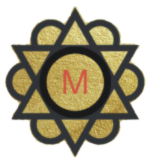
The Hierophant is the fifth card in the Major Arcana of the Tarot deck, often associated with tradition, conformity, and spiritual authority. This card typically depicts a figure resembling a religious leader or teacher, often seated on a throne adorned with symbols of faith and wisdom. The Hierophant serves as a bridge between the divine and the earthly realms, embodying the principles of spiritual guidance and moral instruction.
In many decks, the figure is flanked by two acolytes, symbolizing the transmission of knowledge and the importance of community in spiritual practices. In a Tarot reading, the appearance of the Hierophant can indicate a need for structure and adherence to established norms. It may suggest that the querent is seeking guidance from a mentor or is in a phase of life where traditional values are paramount.
The card can also signify a time for learning, whether through formal education or spiritual exploration. The Hierophant encourages individuals to seek wisdom from established sources, reminding them that there is value in tradition and collective knowledge.
Key Takeaways
- The Hierophant tarot card represents tradition, conformity, and spiritual guidance.
- The symbolism of the Hierophant card includes religious authority, teaching, and adherence to established beliefs.
- In traditional tarot readings, the Hierophant signifies seeking guidance from established institutions or conforming to societal norms.
- The Hierophant card is often associated with spiritual leaders, mentors, and the importance of seeking wisdom from higher sources.
- Different tarot decks may depict the Hierophant card with variations in symbolism and imagery, but the core meaning remains consistent.
The Symbolism of the Hierophant Card
The Hierophant’s Attire and Adornments
The figure of the Hierophant often wears ceremonial robes, which signify authority and the sacred nature of his role. The triple crown he wears can represent the union of the physical, mental, and spiritual realms, suggesting that true wisdom encompasses all aspects of existence.
The presence of the two acolytes at the base of the card further emphasizes the theme of mentorship and guidance. They represent those who seek knowledge and enlightenment, highlighting the importance of community in spiritual growth.
The Hierophant’s Role and Symbolism
The Hierophant’s hand gestures often convey a blessing or teaching, reinforcing his role as a conduit for divine wisdom. The architectural elements in the background, such as arches or pillars, symbolize stability and structure, suggesting that spiritual teachings are grounded in a solid foundation.
The Hierophant in Traditional Tarot Readings

In traditional Tarot readings, the Hierophant often emerges in contexts related to education, spirituality, and societal norms. When this card appears, it may indicate that the querent is at a crossroads where they must choose between following their own path or adhering to conventional expectations. This can manifest in various aspects of life, such as career choices, relationships, or personal beliefs.
The Hierophant encourages individuals to reflect on their values and consider how they align with societal standards. Moreover, the Hierophant can signify a time for formal education or spiritual study. It may suggest that the querent should seek out a mentor or teacher who can provide guidance on their journey.
This card often points to institutions such as schools, religious organizations, or community groups where knowledge is shared and cultivated. In this sense, the Hierophant serves as a reminder that learning is not solely an individual pursuit; it is often enriched by collaboration and shared experiences with others.
The Hierophant and Spiritual Guidance
The Hierophant is deeply intertwined with themes of spiritual guidance and enlightenment. This card often represents a call to connect with higher wisdom or to seek out spiritual practices that resonate with one’s beliefs. When drawn in a reading, it may suggest that the querent is being encouraged to explore their spirituality more deeply or to engage with established religious practices that provide comfort and structure.
In many cases, the Hierophant serves as a reminder that spiritual growth can be facilitated through community involvement and shared rituals. Whether through attending services at a place of worship, participating in group meditations, or engaging in study circles, this card emphasizes the importance of collective experiences in fostering personal development. The Hierophant encourages individuals to embrace their spiritual journey while remaining open to teachings from those who have walked similar paths before them.
The Hierophant in Different Tarot Decks
The representation of the Hierophant can vary significantly across different Tarot decks, reflecting diverse cultural influences and artistic interpretations. In traditional decks like the Rider-Waite-Smith Tarot, the imagery is steeped in Christian symbolism, with the figure resembling a Pope-like character.
Conversely, more contemporary decks may reinterpret the Hierophant in ways that resonate with modern spiritual practices or alternative belief systems. For instance, some decks depict the Hierophant as a wise elder or shamanic figure rather than a religious leader. This shift highlights a broader understanding of spirituality that transcends organized religion and embraces personal exploration.
In these interpretations, the Hierophant may be shown surrounded by nature or engaging with symbols from various traditions, emphasizing inclusivity and diversity in spiritual practices. Such variations illustrate how the essence of the Hierophant can be adapted to reflect evolving societal values and individual beliefs.
The Hierophant Card in Modern Interpretations

In contemporary Tarot readings, interpretations of the Hierophant have evolved to encompass broader themes beyond traditional religious structures. While it still retains its associations with conformity and established norms, modern readers often view this card through a lens that emphasizes personal empowerment and self-discovery. The Hierophant can now represent an individual’s quest for authenticity within societal frameworks rather than mere adherence to them.
This shift allows for a more nuanced understanding of what it means to seek guidance and wisdom in today’s world. The Hierophant may encourage individuals to question established norms critically and explore alternative paths that resonate more deeply with their personal beliefs. In this context, it becomes a symbol of balance between honoring tradition while also carving out one’s unique spiritual journey.
As society continues to evolve, so too does the interpretation of this powerful card, reflecting an ongoing dialogue between tradition and innovation in spiritual practice.
If you are interested in exploring the deeper meanings behind tarot cards, you may also enjoy reading Unlocking the Secrets of Tarot Card Meanings. This article delves into the symbolism and interpretations of various tarot cards, providing insight into how they can be used for personal growth and reflection. Just as The Hierophant represents tradition and spirituality, this article offers a comprehensive guide to understanding the rich symbolism found within tarot cards.
FAQs
What is the Hierophant tarot card?
The Hierophant is a tarot card that represents tradition, spirituality, and religious beliefs. It is often associated with organized religion, formal education, and the search for meaning and purpose in life.
What does the Hierophant tarot card symbolize?
The Hierophant symbolizes the need for guidance, wisdom, and spiritual insight. It represents the importance of tradition, rituals, and established belief systems in shaping one’s values and moral compass.
What is the significance of the Hierophant in a tarot reading?
In a tarot reading, the Hierophant can indicate a need to seek out spiritual or moral guidance, adhere to traditional values, or explore one’s beliefs and principles. It may also suggest the influence of a mentor, teacher, or religious authority figure in the seeker’s life.
How does the Hierophant tarot card relate to spirituality and tradition?
The Hierophant embodies the connection between spirituality and tradition, emphasizing the role of established religious practices, cultural customs, and moral teachings in shaping one’s spiritual beliefs and values.
What are some common interpretations of the Hierophant tarot card?
Common interpretations of the Hierophant include seeking spiritual guidance, adhering to traditional values, embracing formal education or religious teachings, and honoring established rituals and ceremonies. It can also signify the importance of conformity, social norms, and institutional authority.






